News Single
Focus On Connecting And Cooling
Busbar Welding For EV Batteries--The selection of battery and busbar laser welding methods(Jade-busbar)
- 2023-11-28
Busbar Welding For EV Batteries--The selection of battery and busbar laser welding methods (JADE)
The reasonable selection of battery
and busbar welding methods and processes in the manufacturing process of power
batteries will directly affect the cost, quality, safety and consistency of
batteries. Next, JADE will sort out the content of laser welding of power
batteries. Hope it is helpful to readers.
1. Principle of laser
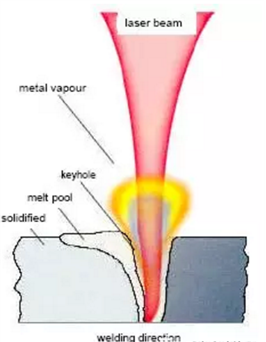
aser welding is to use the excellent directionality and high power density of the laser beam to work, through the optical system to focus the laser beam in a small area, in a very short time to form a highly concentrated heat source area of the welded place, so that the welded object melts and forms a firm weld joint and weld.
2. Types of laser welding
Thermal conduction welding & deep penetration
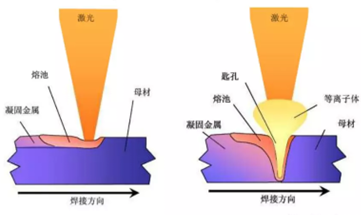
weldingThermal conduction welding, in which the
laser beam melts the surface of the workpiece along the seam, and the melt
flows together and solidifies to form a weld. Mainly used for relatively thin
materials, the maximum welding depth of the material is constrained by its
thermal conductivity, and the weld width is always greater than the welding
depth.
Deep penetration welding, when the high-power
laser gathers on the surface of the metal, the heat does not have time to
dissipate, and the welding depth will deepen sharply, this welding technology
is deep penetration welding. Because of its extremely fast processing speed,
small heat-affected area and minimal distortion, it can be used for deep welds
or several layers of material together.
The
main difference between heat conduction welding and deep penetration welding is
the power density applied to the metal surface per unit time, and the critical
value is different under different metals.
Penetration welding and seam welding, the
connecting piece does not need to be punched, and the processing is relatively
simple. Penetration welding requires a laser welder with high power.
The penetration depth of penetration welding is lower than that of seam
welding, and the reliability is relatively poor.
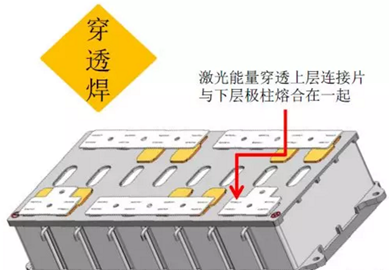
Compared with penetration welding, seam welding requires a lower power laser welder. The penetration of seam welding is higher than that of penetration welding, and the reliability is relatively good. However, the connecting piece needs to be punched, and it is relatively difficult to process.
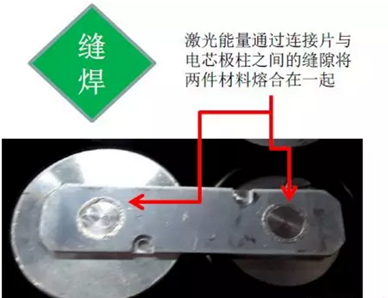
Pulse welding and continuous welding
1) Pulse mode welding laser welding should choose the appropriate welding waveform, commonly used pulse waveforms are square wave, spike wave, double peak wave, etc., the reflectivity of the aluminum alloy surface to light is too high, when the high-intensity laser beam to the surface of the material, the metal surface will have 60%-98% of the laser energy lost due to reflection, and the reflectivity changes with the surface temperature. Generally, when welding aluminum alloy, it is best to choose sharp wave and bimodal wave, which has a longer pulse width in the slowly descending part behind the welding waveform, which can effectively reduce the generation of porosity and cracks.
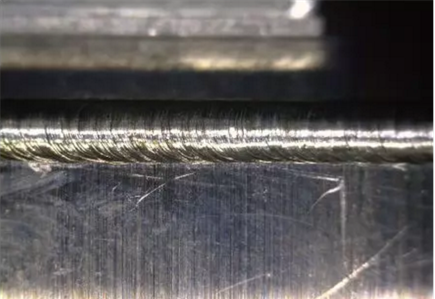
Due to the high
reflectivity of the aluminum alloy to the laser in the pulsed laser welding
sample, the welding
head
is usually deflected at a certain angle during the welding process in order to
prevent the vertical reflection caused by the vertical incidence of the laser
beam and damage to the laser focusing mirror. The diameter of the solder joint
and the diameter of the effective bonding surface increase with the increase of
the laser inclination angle, and when the laser inclination angle is 40°, the largest
solder joint and effective bonding surface are obtained. The penetration depth
and effective penetration of the solder joint decrease with the inclination
angle of the laser, and when it is greater than 60°, the effective welding
penetration decreases to zero. Therefore, tilting the welding head to a certain
angle can appropriately increase the penetration depth and width of the weld.
In
addition, during welding, it is necessary to weld 65% of the laser weld spot
and 35% of the shell with the weld as the boundary, which can effectively
reduce the explosion caused by the problem of closing the cover.
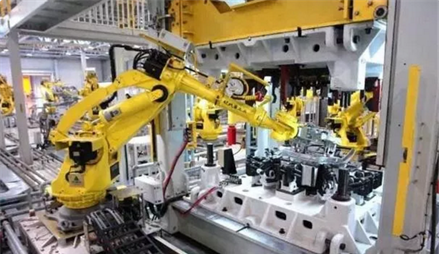
2) Continuous mode welding continuous laser
welding because its heating process is not like pulse machine sudden cooling
and sudden heating, the crack tendency is not very obvious during welding, in
order to improve the quality of the weld, the continuous laser welding is
adopted, the surface of the weld is smooth and uniform, no spatter, no defects,
and no cracks are found inside the weld. In the welding of aluminum alloy, the
advantages of CW laser are obvious, compared with the traditional welding method,
the production efficiency is high, and there is no need to fill the wire;
compared with pulse laser welding, it can solve the defects generated after
welding, such as cracks, porosity, spatter, etc., to ensure that the aluminum
alloy has good mechanical properties after welding; it will not sink after
welding, and the amount of polishing and grinding after welding is reduced,
which saves production costs, but because the spot of CW laser is relatively
small, the assembly accuracy of the workpiece is required to be higher.

In the welding of power batteries, welding process
technicians
will select appropriate laser and welding process parameters according to the
customer's battery material, shape, thickness, tensile requirements, etc.,
including welding speed, waveform, peak value, sonotrod tilt angle, etc., to
set reasonable welding process parameters to ensure that the final welding
effect meets the requirements of power battery manufacturers.
3. The advantages of laser welding are energy
concentration, high welding efficiency, high processing accuracy, and large weld depth-width ratio. The
laser beam is easily focused, aligned and guided by optical instruments, and
can be placed at an appropriate distance from the workpiece, and can be
redirected between fixtures or obstacles around the workpiece, other welding
laws cannot be used due to the space constraints mentioned above. The heat input is small, the heat affected
zone is small, the
residual stress and
deformation of the workpiece are small, the welding energy can be accurately
controlled, the welding effect is stable, the welding appearance is good, the
non-contact welding, the optical fiber transmission is good, the accessibility
is good, and the degree of automation is high. When welding thin or thin
diameter wires, it is not as easy to remelt as arc welding. Due to the
principle of "lightness", the battery cells used for power batteries
usually use lighter aluminum materials, and they also need to be made more
"thin", and the general shell, cover, and bottom are basically
required to reach less than 1.0 mm, and the thickness of the basic materials of
mainstream manufacturers is about 0.8 mm. Provides high-strength welding for a
wide range of material combinations, especially when welding between copper and
aluminum. It is also the only technology that can be used to weld nickel
plating to copper materials.
4 Difficulties in laser welding processAt
present, the battery shell made of aluminum alloy material
accounts for more than 90% of the entire power battery. The difficulty of
welding lies in the extremely high reflectivity of aluminum alloy to laser,
high sensitivity to porosity during welding, and some problems and defects will
inevitably occur during welding, the most important of which are porosity,
thermal cracks and explosions.
Pores
are easy to occur during laser welding of aluminum alloys, and there are two
main types: hydrogen pores and pores caused by bubble bursting. The problem of
hydrogen porosity is exacerbated by the rapid cooling rate of laser welding,
and there is an additional type of hole in laser welding due to the collapse of
small holes.
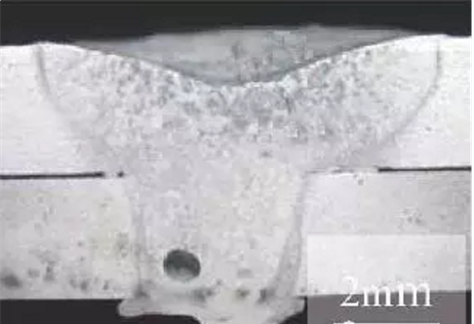
Thermal crack problem. Aluminum alloy is a
typical eutectic alloy, which is prone to thermal cracks during welding,
including weld crystalline cracks and HAZ liquefaction cracks, due to the
segregation of the components of the weld zone, eutectic segregation will occur
and the grain boundary will melt, and liquefaction cracks will be formed at the
grain boundaries under the action of stress, reducing the performance of the
welded joint.

Exploding fire (also known as splashing) problems. There are many factors that cause the explosion, such as the cleanliness of the material, the purity of the material itself, the characteristics of the material itself, etc., and the stability of the laser plays a decisive role. Protrusions, pores, and internal bubbles on the surface of the shell. The main reason is that the core diameter of the fiber is too small or the laser energy is too high. It is not the "better beam quality, better welding effect" as advertised by some laser equipment providers, and good beam quality is suitable for superimposed welding with large penetration depth. Finding the right process parameters is the key to solving the problem.
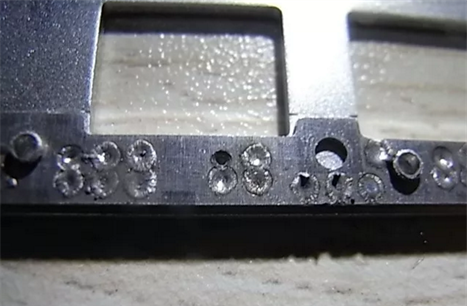
Other difficult soft package tab
welding has high requirements for welding tooling, and the tab must be pressed
firmly to ensure the welding gap. It can realize high-speed welding of complex
trajectories such as S-shape and spiral, and strengthen the welding strength
while increasing the joint area of the weld.
The welding of
cylindrical
cells is mainly used for the welding of the positive electrode, and it is easy
to weld through due to the thin shell of the negative electrode. For example,
the negative electrode weld-free process used by some manufacturers at present,
and the positive electrode is laser welding.
When
the prismatic battery is welded together, the pole or connecting piece is
polluted thickly, and when the connecting piece is welded, the contaminants
decompose, which is easy to form welding explosion points and cause holes, and
the battery with thin pole and plastic or ceramic structural parts under it is
easy to weld through. When the pole is small, it is also easy to weld to the
point of plastic burning, forming a burst point. Do not use multi-layer
connecting pieces, there are pores between the layers, it is not easy to weld
firmly.
The
most important process in the welding process of square batteries is the
encapsulation of the shell cover, which is divided into the welding of the top
cover and the bottom cover according to the different positions. Due to the
small size of the batteries produced by some battery manufacturers, they use
the "deep-drawing" process to manufacture the battery case, and only
need to weld the top cover.

Prismatic
power battery side welding
samplesPrismatic
battery welding methods are mainly divided into side welding and top welding,
among which the main advantage of side welding is that the impact on the inside
of the battery cell is less, and the spatter will not easily enter the inside of
the shell cover. Because it may cause protrusions after welding, which will
have a slight impact on the assembly of the subsequent process, the side
welding process has extremely high requirements for the stability of the laser
and the cleanliness of the material. The top welding process has low
requirements for the integration of welding equipment due to welding on one
surface, and the mass production is simple, but there are also two
disadvantages, one is that there may be a little splash in the welding into the
cell, and the other is that the high processing requirements of the front
section of the shell will lead to cost problems.
5 Influencing factors of welding quality: Laser
welding is currently the main method of high-end battery welding. Laser welding
is a process in which a high-energy beam laser irradiates a workpiece, causing
the working temperature to rise sharply, and the workpiece is melted and
reconnected to form a permanent connection. The shear strength and tear
resistance of laser welding are relatively good. The conductivity, strength,
air tightness, metal fatigue and corrosion resistance of battery welding are typical
welding quality evaluation standards.
There are many
factors that affect the quality of laser welding. Some of them are highly
volatile and quite unstable. How to correctly set and control these parameters
to ensure the welding quality in the appropriate range in the high-speed
continuous laser welding process. The reliability and stability of weld forming
are important issues related to the practical application and industrialization
of laser welding technology. The main factors affecting the quality of laser
welding are divided into three aspects: welding equipment, workpiece condition
and process parameters.
1)
Welding equipment
The most important requirements for the quality of the laser are the beam mode and output power and its stability. The lower the order of the beam mode, the better the beam focusing performance, the smaller the spot, the higher the power density and the greater the depth and width of the weld under the same laser power. Generally, the basic mold (TEM00) or low-order mold is required, otherwise it is difficult to meet the requirements of high-quality laser welding. At present, it is still difficult for domestic lasers to be used for laser welding in terms of beam quality and power output stability. Judging from the foreign situation, the beam quality and output power stability of the laser are quite high and will not become a problem for laser welding. The biggest factor affecting the welding quality in the optical system is the focusing lens, the focal length used is generally between 127mm (5in) and 200mm (7.9in), the small focal length is good for reducing the diameter of the waist spot of the focused beam, but too small is easy to be polluted and spatter damage during the welding process.

The
shorter the wavelength, the higher the absorption, and generally the materials
with good conductivity have high reflectivity, for YAG laser, the reflectivity
is 96% for silver, 92% for aluminum, 90% for copper, and 60% for iron. The
higher the temperature, the higher the absorption rate, which is a linear
relationship, and the absorption rate can be improved by coating phosphate,
carbon black, graphite, etc. on the surface.
2) The condition of the workpiece: laser
welding requires the edge of the workpiece to be processed, the assembly has a
high precision, the spot is strictly aligned with the weld, and the original
assembly accuracy of the workpiece and the spot alignment can not be changed
due to the thermal deformation of the weld during the welding process. This is
because the laser spot is small, the weld is narrow, and the metal is generally
not filled, if the assembly is not tight, the gap is too large, the beam can pass
through the gap and cannot melt the base metal, or cause obvious undercuts and
depressions, such as the deviation of the spot to the seam is slightly larger,
it may cause no fusion or no weld penetration. Therefore, in general, the plate
butt assembly gap and spot to seam deviation should not be greater than 0.1mm,
and the wrong edge should not be greater than 0.2mm. In practice, sometimes
laser welding technology cannot be used because these requirements cannot be
met. In order to obtain good welding results, the allowable butt gap and lap
gap should be controlled within 10% of the thickness of the thin plate.
Successful laser
welding requires close contact between the substrates to be welded. This
requires careful tightening of the parts to achieve the best results. And this
is difficult to do well on thin tab substrates, as it is prone to bending
misalignment, especially if the tabs are embedded in large battery modules or
components.
3) Welding parameters (1) The most important of
the welding parameters is the power density of the laser spot, which
has the following effects on the welding mode and the stability of the weld
forming: with the small to large power density of the laser spot, it is stable
thermal conduction welding, mode unstable welding and stable deep penetration
welding. The power density of the laser spot, in the case of a certain beam
pattern and focal length of the focusing mirror, is mainly determined by the
laser power and the focal position of the beam. The laser power density is
proportional to the laser power. When the beam focus is in a certain position
below the surface of the workpiece (within the range of 1~2mm, depending on the
thickness and parameters), the most ideal weld can be obtained. Deviating from
this optimal focus position, the spot on the surface of the workpiece will
become larger, resulting in a smaller power density, and to a certain range, it
will cause a change in the form of the welding process.
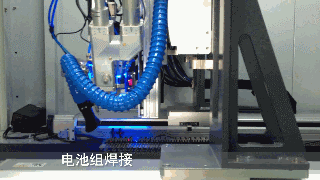
The
effect of welding speed on the form of the welding process and the stable parts
is not as significant as that of the laser power and the position of the focus,
only when the welding speed is too large, the heat input is too small and the
stable deep penetration welding process cannot be maintained. In actual
welding, stable deep penetration welding or stable thermal conduction welding
should be selected according to the requirements of the weldment for
penetration, and the mode of unstable welding should be absolutely avoided.
(2)
In the range of deep penetration welding, the influence of welding parameters
on the penetration depth: in the stable deep penetration welding range, the
higher the laser power, the greater the penetration depth, about 0.7 power
relationship, and the higher the welding speed, the shallower the penetration
depth. Under the condition of a certain laser power and welding speed, the
penetration depth is the largest when the focus is in the optimal position, and
when it deviates from this position, the penetration depth decreases, and even
becomes unstable mode welding or stable thermal conduction welding.
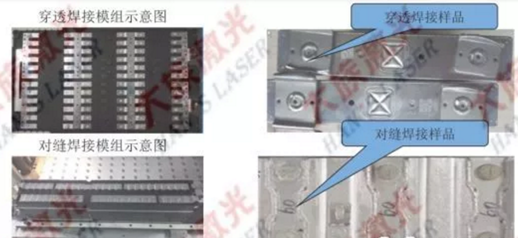
(3) The
main function of the shielding gas is to protect the workpiece from oxidation
during the welding process, to protect the focusing lens from metal vapor
pollution and sputtering of liquid droplets, to disperse the plasma generated
by high-power laser welding, to cool the workpiece and reduce the heat-affected
zone.
Argon or helium is
usually used as the shielding gas, and nitrogen can also be used if the
apparent quality is not high. Their propensity to produce plasma is
significantly different: helium has a lower tendency to produce plasma than
argon under the same conditions due to its high ionization and fast thermal
conduction, allowing for greater penetration. In a certain range, with the
increase of the shielding gas flow, the tendency to inhibit the plasma
increases, so the penetration depth increases, but when it increases to a
certain range, it tends to be stable.
(4)
Monitoring: Among the four welding parameters, the welding speed and shielding
gas flow are the parameters that are easy to monitor and maintain stability,
while the laser power and focus position are the parameters that may fluctuate
during the welding process and are difficult to monitor. Although the laser
power output from the laser is highly stable and easy to monitor, due to the
loss of the light guide and focusing system, the laser power reaching the
workpiece will change, and this loss is related to the quality, use time and
surface contamination of the optical workpiece, so it is not easy to monitor
and becomes an uncertain factor in the welding quality. The beam focus position
is one of the most important factors in the welding parameters that has the
greatest impact on the weld quality and is the most difficult to monitor and
control. At present, in production, it is necessary to rely on manual
adjustment and repeated process testing methods to determine the appropriate
focus position to obtain the ideal penetration depth. However, during the
welding process, due to the deformation of the workpiece, the thermal lensing
effect or the multi-dimensional welding of the spatial curve, the focus
position will change and may exceed the allowable range.
For the above two situations, on the one hand,
it is necessary to adopt high-quality, high-stability optical components, and
maintain them frequently, prevent pollution, and keep them clean; on the other
hand, it is required to develop real-time monitoring and control methods for
laser welding process to optimize parameters, monitor the changes of laser
power and focus position of the workpiece, realize closed-loop control, and
improve the reliability and stability of laser welding quality.
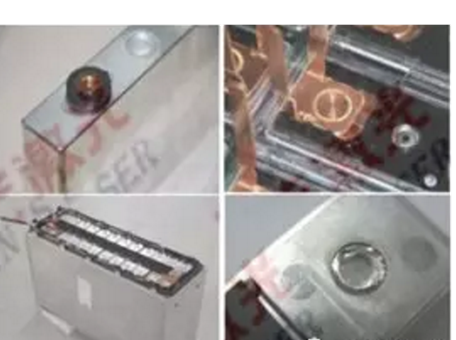
Finally, it is important to note that
laser welding is a melting process. This means that the two substrates will
melt during the laser welding process. This process is fast, so the overall
heat input is low. However, because this is a melting process, brittle,
high-resistance intermetallic compounds can be formed when different materials
are welded. Aluminum-copper combinations are particularly susceptible to the
formation of intermetallic compounds. These compounds have been shown to have
negative effects on the short-term electrical properties and long-term
mechanical properties of lap joints in microelectronic devices. The impact of
these intermetallic compounds on the long-term performance of lithium batteries
is uncertain.
Summarized
By Jade-Busbar.(www.jade-busbar.com)
Search
Categories
Contact Us
- Address: CHN SITE : Huizhou, GuangDong , China
- Phone: +00852-36283398
- Email: sales@jade-thermalloy.com
-
Monday - Friday: 9:00 am - 10:00 pm
Saturday - Sunday: Closed
Say Hey
LiveChatclose


